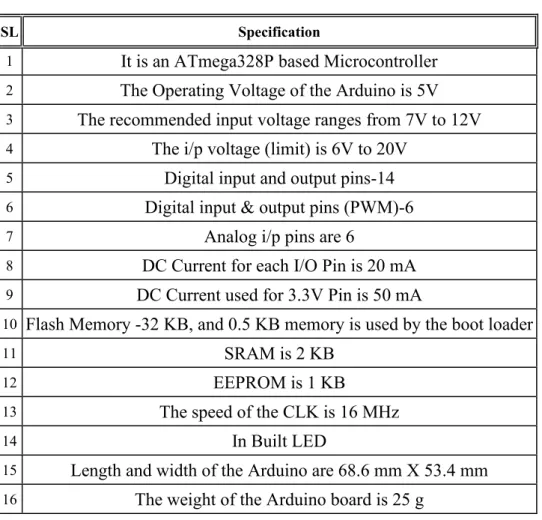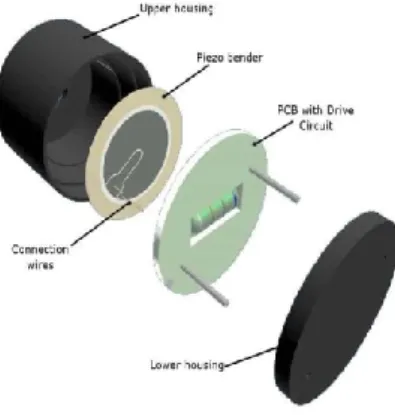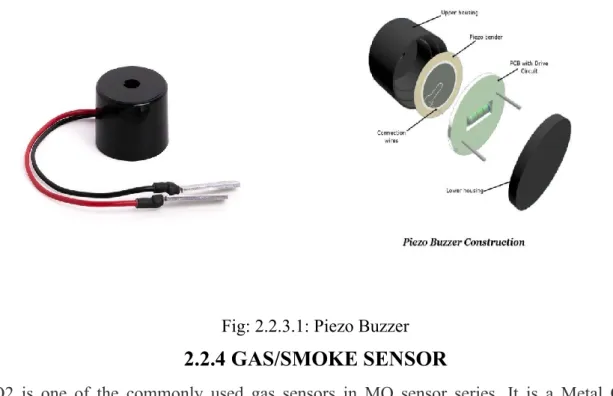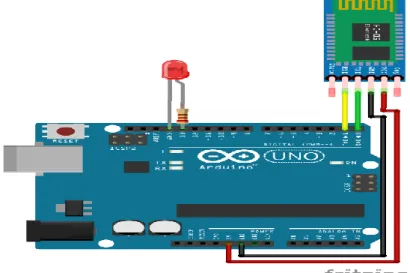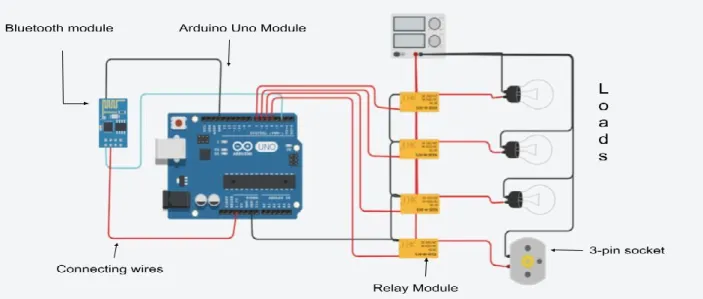This is to certify that this project titled "Design and Implementation of IoT based SMART HOME SYSTEM" has been done by the following students under my direct supervision. This project work was carried out by them in the laboratories of the Department of Electrical and Electronic Engineering at the Faculty of Engineering, Sonargaon University (SU) in partial fulfillment of the requirements for the degree of Bachelor of Science in Electrical and Electronic Engineering. The report titled "Design and Implementation of IoT-based SMART HOME SYSTEM" has been prepared to meet the requirements of our practical program.
In the preparation and preparation of our practical report, we would like to thank several people for their enormous help and extensive cooperation. In the first place, we would like to express our gratitude to the university authority that has given us permission to do our practical. Rakibul Alam, Assistant Professor, Department of Electrical & Electronics Engineering, SU−Sonargaon University, Dhaka, for his valuable and patient advice, sympathetic assistance, collaboration and contribution to new ideas.
Deep theoretical and hardware knowledge and great interest of our supervisor in this field prompted us to carry out this project. Finally, we would like once again to express our gratitude to the respected SU Vice Chancellor, Professor Dr. Abul Bashar, and also to the Head of the Department of SU, Electrical & Electronics Engineering, Professor Dr. Abul Bashar.
Several programming languages are used in the implementation and further applications of the door sensor are discussed as well as some of its shortcomings such as possible interference from other radio frequency devices.
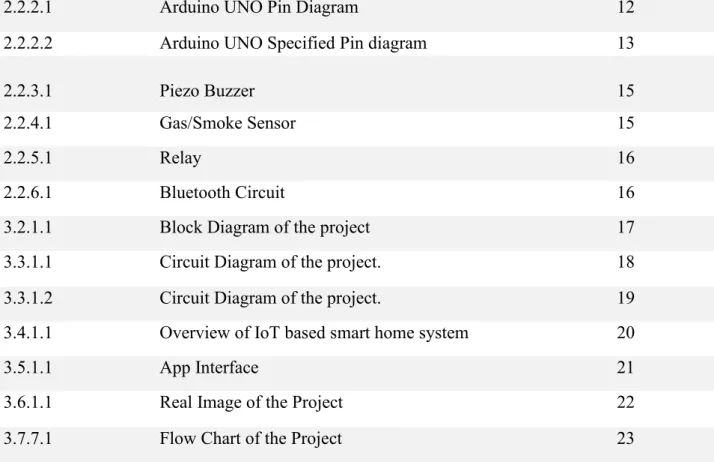
INTRODUCTION
Introduction
Background Study
Objectives
Project Organization
THEORY OF THE PROJECT
Introduction
Theory
- Arduino Uno
- Microcontroller ATMEGA328P
- PIEZOELECTRIC BUZZER
- GAS/SMOKE SENSOR
- RELAY
- BLUETOOTH INTERFACE CIRCUIT
The Atmel® picoPower® ATmega328/P is a low-power CMOS 8-bit microcontroller based on the AVR® enhanced RISC architecture. The ATmega328/P offers the following features: 32Kbytes of in-system programmable flash with Read-While-Write capabilities, 1Kbytes of EEPROM, 2Kbytes of SRAM, 23 general I/O lines, 32 general. In power saving mode, the asynchronous timer continues to run, allowing the user to maintain a timer base while the rest of the device sleeps.
The ADC Noise Reduction mode stops the CPU and all I/O modules except the asynchronous timer and ADC to minimize switching noise during ADC conversions. In standby mode, the crystal/resonator oscillator runs while the rest of the device sleeps. In extended standby mode, both the master oscillator and the asynchronous timer continue to run.
On-chip ISP Flash allows program memory in the system to be reprogrammed via an SPI serial interface, by a conventional non-volatile memory programmer, or by an On-chip Boot program running on the AVR core. The boot program can use any interface to download the application program into Application Flash memory. Software in the Boot Flash section will continue to run while the Application Flash section is being updated, providing true Read-While-Write functionality.
Combining an 8-bit RISC CPU with in-system self-programmable flash on a monolithic chip, the Atmel ATmega328/P is a powerful microcontroller that provides a highly flexible and cost-effective solution for many embedded control applications. But at the same time, depending on the specifications of the piezo-ceramic buzzer, it is also reliable and can be constructed in a wide variety of sizes that operate over different frequencies to produce different sound output. So when certain piezoelectric materials are exposed to an alternating electric field, the piezo buzzer element (often a man-made piezoceramic material) stretches and compresses in order of the frequency of the current.
It is a Metal Oxide Semiconductor (MOS) type gas sensor also known as Chemiresistor as the detection is based on the change in resistance of the sensing material when the Gas comes into contact with the material. When the relay contact is open (NO), the relay is not activated with the contact open. The range is usually about 50 feet, although this can be increased significantly with the use of a range extender circuit that either increases the sensitivity or increases the transmit power or both at the same time.
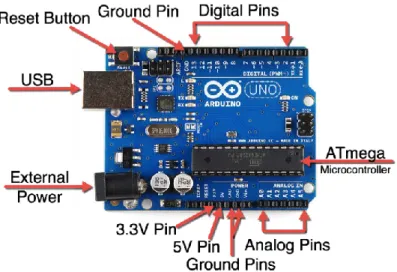
STRUCTURE & IMPLEMENTATION
- Introduction
- Block Diagram
- Circuit Description
- Overview of IoT based Smart home system
- Working Principle
- Real Image of the Project
- Flow Chart
- Used Materials
- Conclusion
Android application from any mobile device connects to the HC-06 Bluetooth module and controls the home appliances such as room lighting, water pump motor and garage motor. For security reasons of this project, the Bluetooth connection of the application and the Bluetooth device needs a password when pairing for authorized use. After that, the confirmation message confirms that the Bluetooth connection is successful and then displays a list of available devices in the Android application that can be controlled as remote devices.
This project also monitors the CO2 content of the house with the MQ-2 gas sensor and triggers an alarm through the speaker when it detects a certain amount of smoke in the house. The block diagram of the implemented project shown in the figure below, our proposed project consists of the following three parts. Smart home automation is the application field of Internet of Things for home remote control, comfortable and healthy living, energy efficiency, safety, security and social benefits.
IoT technology has made it possible for householders to remotely have total control over their homes, devices, environmental conditions and activities in their homes and their surroundings, regardless of the current location of the householder. Several commercial products such as Amazon Echo, Google Nest Hub, Wink Hub2, Samsung SmartThings and Apple Home Kit have been developed, tested, implemented and used for the intelligent control of a home. However, interoperability, security of data, data analysis, security of communication and the home remain prominent challenges in smart home automation.
To address some of these existing challenges in smart home automation, we present the Intelligent Home Automation System. After connecting, the application interface will show download icons as shown in the figure below: 3.5.1. The LDR detects daylight and can switch the light on/off depending on the required illumination of the room.
Gas/smoke detector detects the noxious gas in the room when it gets high, then sends signal through the buzzer and relay disrupts the circuit. At the starting point, the bluetooth in smartphone/android should activate, then connect with the bluetooth module by matching with it, bluetooth connected prompt will be displayed, then loads are controllable by selecting icons on app screen. Automatic actions are for LDR & Gas/Smoke Detectors, where room lighting (Lumen) is detected and self switches on/off and flammable gas/smoke which activates the piezoelectric buzzer and relay is self detected to protect the circuit.
In this chapter we have discussed the block diagram, circuit description, working principle, flow diagram also shows the real picture of the project and others. In the later part of this paper, we discussed the result and discussion of the project to make the concept clear to everyone.
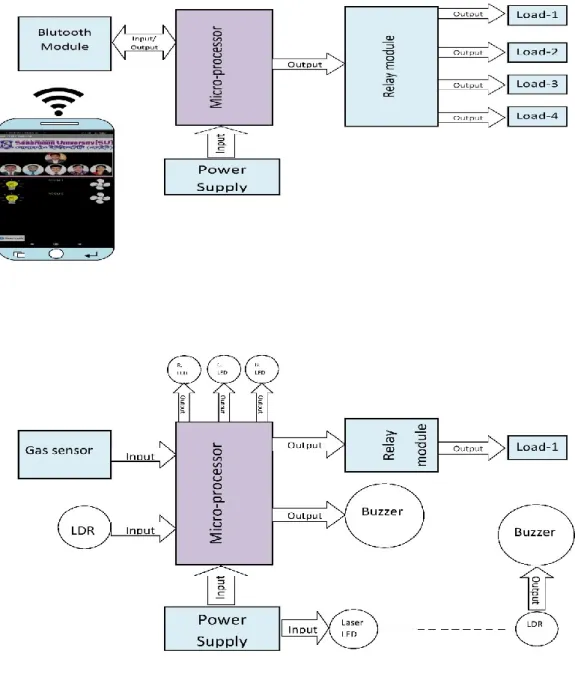
DISCUSSIONS PROS & CONS
- Introduction
- Advantags of Smart Home
- Disadvantages of Smart Home
- Discussion
- Cost Estimation
- Applications
- Conclusion
The main advantage is that the operation of the system can be changed according to the situation (high/low energy consumption of the load). This IOT-based SMART HOME SYSTEM provides benefits such as convenience, convincing, centralized device control, cost reduction, energy saving, safety and security. The home automation system ensures an improved quality of life for users, especially the elderly &.
Usually, household appliances remain turned on due to laziness or human negligence.
CONCLUSION
Conclusion
Future Work
Appendix
